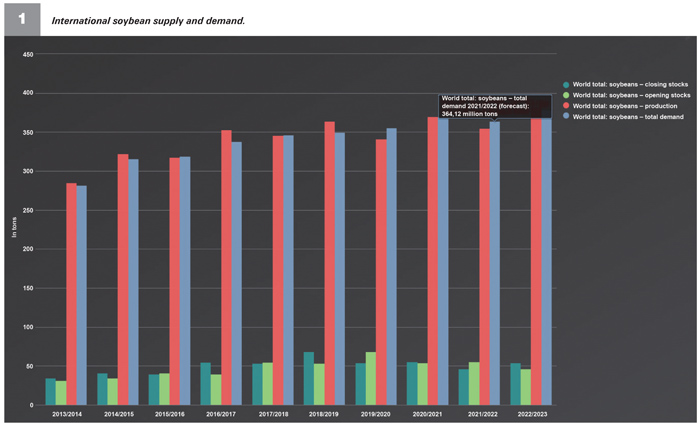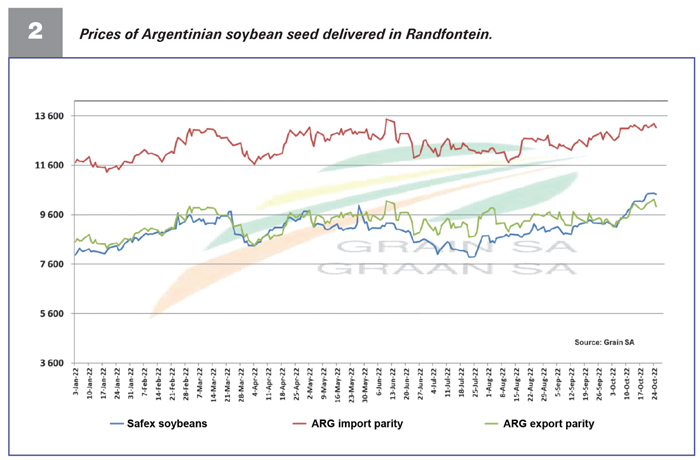January 2023
| CHRISTIAAN VERCUIEL, JUNIOR AGRICULTURAL ECONOMIST, GRAIN SA |  |
Soybeans found a foothold in South Africa around the early 1900s, when the need arose for a rotation crop for maize. However, the reason for soybean cultivation changed drastically in 1908, when British companies shifted their focus to colonies for the acquisition of soybeans for soya oil.
In recent years, soybean production in South Africa has been increasing at a very steady pace. In this article we take a look at the international (global) and local soybean market.
INTERNATIONAL OUTLOOK
In the global market, the general trend was that production is more than the total demand and therefore, stocks were able to build up. This trend continued until the 2019/2020 season. From this season onward, production was either very close to or less than the demand.
Due to continuously increasing consumption, the market was forced to dig into existing stocks to satisfy the demand. This caused declining international closing stocks at the end of each season. These lower stocks in turn supported international soybean prices.
As illustrated in Graph 1, forecasts indicate that this trend will come to an end. After unfavourable weather conditions in South America in the 2021/2022 season, ending stocks were at a very low point. Due to this low point, prices were supported – which in turn makes it more profitable for farmers to plant soybeans. Soybean production in Brazil is expected to increase by 25 million tons to 30 million tons.


LOCAL MARKET
The local soybean prices have seen positive market sentiment from the second week in September until the last week in October.
South African soybeans are very competitive in the international market – this can be seen by strong export figures. Prices remain very close to the Argentinian export parity. For a while the Argentinian export parity rose significantly, making the United States of America (USA) the cheapest origin for soybeans, but conditions in the market have returned to the usual state.
Why Argentinian prices rose
To battle inflation and reduce the outflow of currency, the Argentinian government regulated the local currency exchange rate. This meant that soybeans that were sold in the international market, did not sell for the correct price according to their value.
Therefore producers did not sell soybeans and rather stored the products on their farms until the situation improved. Argentina then had to import soybeans, process it and export the processed soybean products.
CONCLUSION
South Africa remains a competitive soybean destination, with sufficient supply to satisfy the local demand and export a healthy number of soybeans. With the increased soybean production in recent years, South Africa can continue to increase its soybean exports on an annual basis.
Publication: January 2023
Section: Pula/Imvula